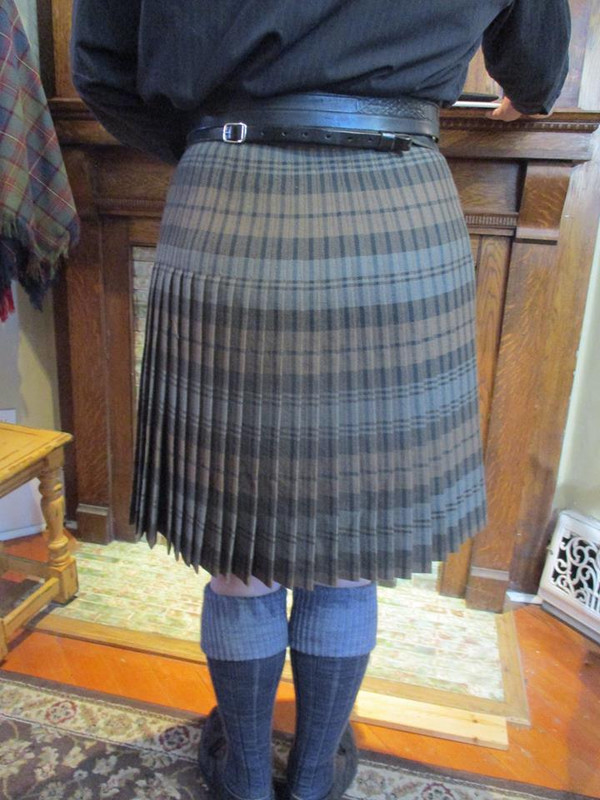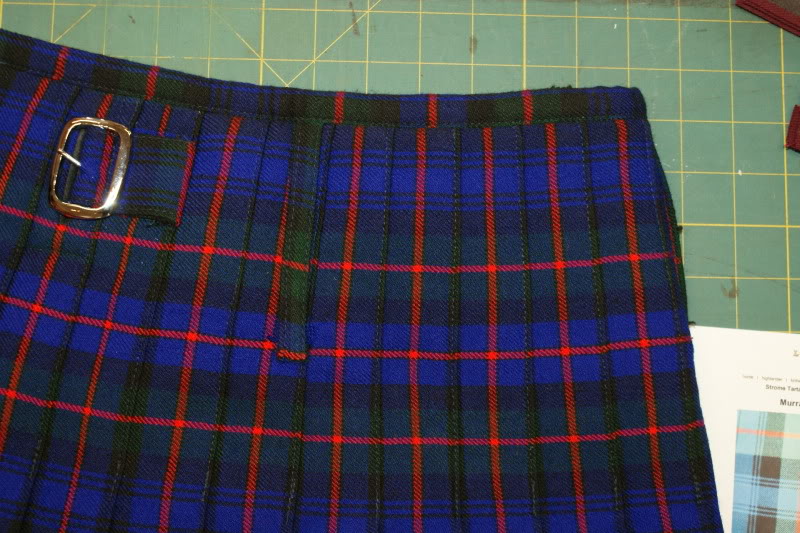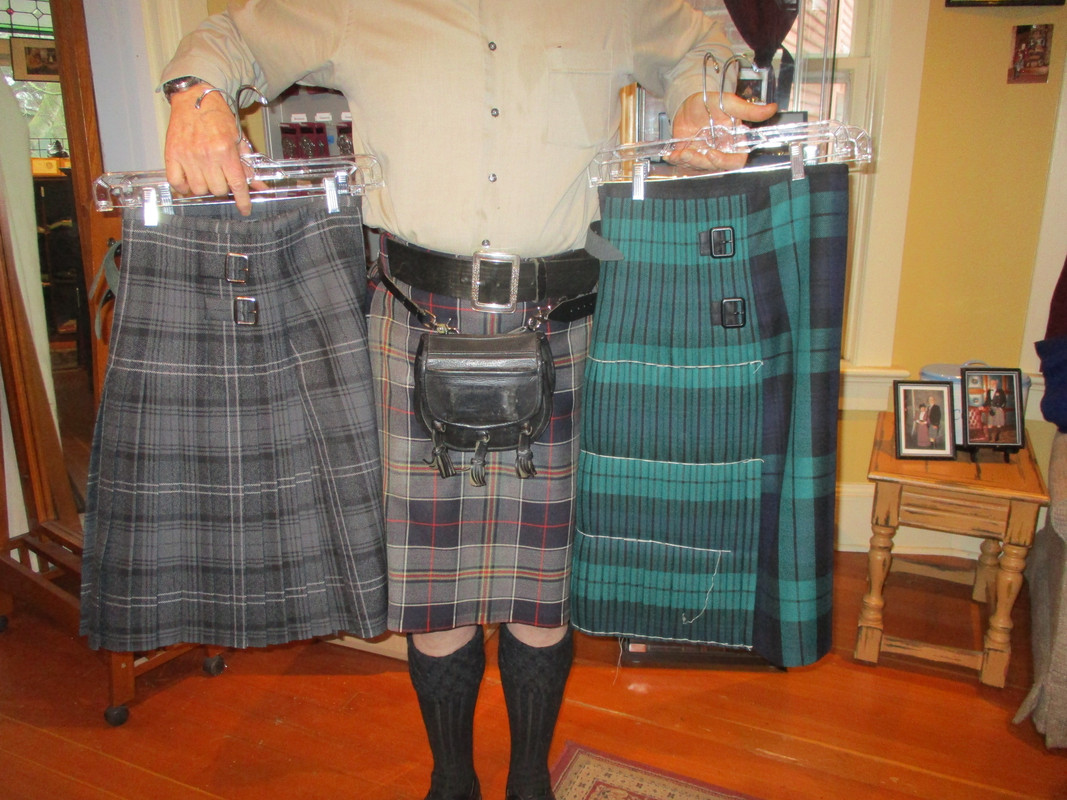|
-
Kilt at the navel?
I'm sure this has been discussed here ad infinitum, but have always found the fit of a traditional kilt just below the ribcage to be extremely uncomfortable.
My best kilt is a 2018 Burnett and Struth Sinclair hunting tartan that I'm thinking of having shortened a couple of inches so it sits around the navel and ends at the top of the knee. The shortening won't destroy a selvedge hem since the makers already hemmed it. I understand the loss of horizontal pattern elements will be less than ideal, but I see no other way forward.
-
-
 Originally Posted by Egerland

I'm sure this has been discussed here ad infinitum, but have always found the fit of a traditional kilt just below the ribcage to be extremely uncomfortable.
My best kilt is a 2018 Burnett and Struth Sinclair hunting tartan that I'm thinking of having shortened a couple of inches so it sits around the navel and ends at the top of the knee. The shortening won't destroy a selvedge hem since the makers already hemmed it. I understand the loss of horizontal pattern elements will be less than ideal, but I see no other way forward.
Ordinarily, I would say don't do it. You'd hate the result.
But if the bottom of the kilt is already cut and hemmed, you have nothing to lose - apart from a bit of the sett, which only you will know.
And if it makes the kilt wearable, why not..?
-
-
If I may, I am going to approach this from a Traditional kilt makers standpoint.
There are three vital points on a kilt.
Where the waist is designed to fit.
Where the bottom of the Feel is supposed to fit.
And where the selvedge edge is designed to fit.
Of these it is where the bottom of the Fell is supposed to fit that is most important.
If the bottom of the Fell is below the Hip/buttock line the kilt will develop large shower curtain folds and you will sit on the pleat stitching causing it to fail.
If the bottom of the Fell is above theHip/buttock line the pleats will splay out and the kilt will look like an "A"-line skirt.
To alter a kilt designed for the top strap to cinch into the anatomical waist you must shorten it from the top down to keep the bottom of the Fell right at the Hip/buttock line.
This involves removing the top band.
Removing the straps and buckles.
Cutting down the top of the kilt.
Movinf and re-installing the Stabilizer.
Re-cutting the Interfacing.
Re-installing the top band.
Re-installing the straps and the buckles including the left top strap hole.
It is usually easier on kilts with no strap hole and only one strap on the right side.
The problem is that most tailors do not understand how the interfacing and the stabilizer of a Traditional kilt are constructed.
Sorry, but you cannot just cut some off the bottom and hope to achieve a good fit.
Do you know who made your kilt? If so, I may be able to advise more.
-
The Following User Says 'Aye' to Steve Ashton For This Useful Post:
-
Thanks for the feedback.
Burnett and Struth made the kilt.
At this point I'm inclined to order a new kilt; the cost to hem the old one is fairly substantial.
-
-
Yea, that is just one of the things about kilts that you have to accept. Lowering the waist costs almost as much as to make a new one from scratch. All of the construction is concentrated in the upper portion of the kilt. All the stitching, all the tapering and all of the internal strengthening elements are from the hip line up to the top band.
If you do order a new kilt make sure that you tell them that this is a lower waisted kilt. Then give them the measurement from where you want the top of the kilt to be, (Or where you want the top straps to be plus the Rise)
down to the Hip line and also down to the top of your knee cap.
The Rise is the portion of the kilt from the center of the top straps up to the top of the top band of the kilt. The rise will flare out on a kilt designed to be worn up at the anatomical waist.

May just go straight up if designed to be worn where the belt would cover from the top of the Hip bones up to the ribs.
This is a 1" straight rise kilt designed to be worn a bit lower than a Traditional style kilt, but not a hip hugger like jeans.

Or, as in the case of many import kilts, may reverse flare where the smallest part of the kilt is not at the straps but at the top band.

All three of these kilts are designed and constructed to have the waist at a particular height. The bottom or selvedge edge is in the same place for all three as is the bottom of the
Fell at the Hip line.
The military kilt is very high. The Gray kilt is a full Traditional style and the one I am wearing is designed and constructed from the start to be worn lower.

But honestly, very few kiltmakers offer kilts designed to be worn lower.
Last edited by Steve Ashton; 1st June 24 at 03:21 PM.
-
The Following User Says 'Aye' to Steve Ashton For This Useful Post:
-
I've been wearing traditional kilts for nearly 50 years now (indeed they were the only kind of kilts that existed until recently) and I've never once thought about where the top of the kilt goes in terms of navel or ribcage.
Nor of waist, because in fact I've never had one. When I was in my teens and 20s I was a skinny runner, straight-sided, and over the years as I've put on weight I've got bigger around but stayed straight-sided. (My waist and hip measurements have always matched.)
Rather, I've always worn kilts to the height dictated by traditional waistcoats and jackets.
Most Highland jackets have the high button-stance, and Highland waistcoats have the high lower terminus, that non-Highland jackets and waistcoats have had up to fairly recently.
Recently the waistline of men's clothing has dropped. In the photo below see how much lower the top of the trousers is than where the suit-jacket buttons, than the bottom of the waistcoat is. Traditional mens trousers would have come up to about where the single button is on a one-button jacket, where the upper button is on a two-button jacket.
Thus there would be no shirt showing between the bottom of the waistcoat and the top of the trousers.

In Highland Dress terms see how high traditional kilts are made, and how correspondingly short traditional Highland waistcoats are (below left).
Make a kilt low-waisted and just as in "Saxon" dress there's a gap of shirt showing (below right).

Last edited by OC Richard; 8th June 24 at 06:41 AM.
Proud Mountaineer from the Highlands of West Virginia; son of the Revolution and Civil War; first Europeans on the Guyandotte
-
The Following 3 Users say 'Aye' to OC Richard For This Useful Post:
 Posting Permissions
Posting Permissions
- You may not post new threads
- You may not post replies
- You may not post attachments
- You may not edit your posts
-
Forum Rules
|
|








 Reply With Quote
Reply With Quote















Bookmarks